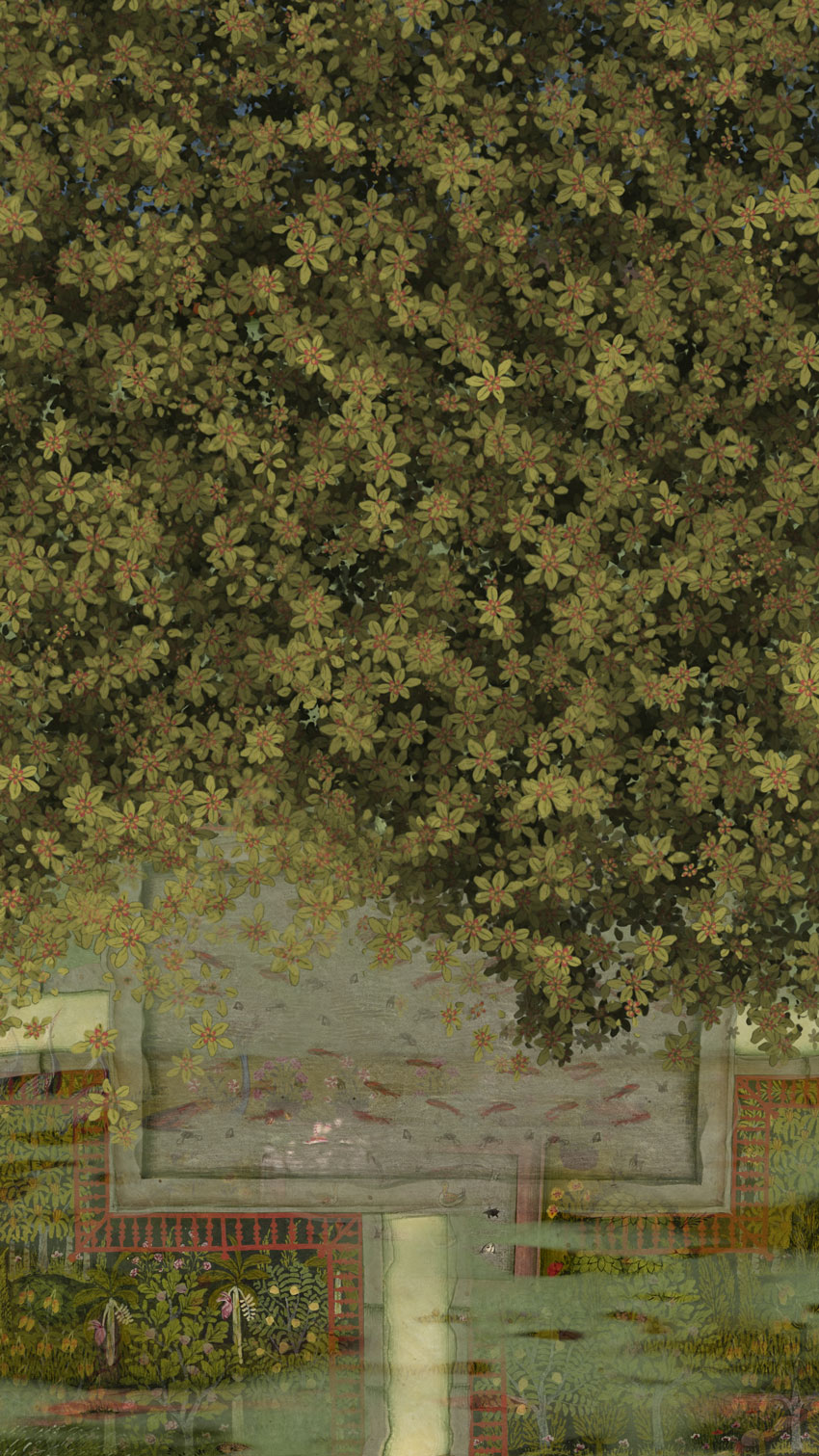Shahzia Sikander
Born in 1969 in Lahore (Pakistan)
Lives and works between New York (USA) and Seville (Spain)
Shahzia Sikander received her BFA in 1991 from the National College of Arts, Lahore, in miniature painting. Sikander received her MFA from the Rhode Island School of Design in 1995, and from 1995-1997, she participated in the CORE Program of the Glassell School of Art at The Museum of Fine Arts, Houston. Sikander has been the subject of major international exhibitions around the world, including, amongst others, MAXXI | Museo nazionale delle arti del XXI secolo, Rome (2016-17); Asia Society Hong Kong Center, Hong Kong (2016); the Guggenheim Museum, Bilbao (2015); Bildmuseet Umea, Sweden (2014); Linda Pace Foundation, San Antonio, Texas (2012-13); IKON, Birmingham (2008); Museum of Contemporary Art, Sydney (2007); Irish Museum of Modern Art, Dublin (2007); The San Diego Museum of Art, San Diego (2004); the Whitney Museum of American Art, Philip Morris/Altria Branch (2000); Hirshhorn Museum and Sculpture Garden (1999); Renaissance Society at the University of Chicago (1998); The Drawing Center (1997); The Whitney Biennale (1997); and has participated in more than 400 group shows and international art forums. Sikander has received numerous grants, fellowships and awards.
Disruption as Rapture (2016) is a 4K single-channel video animation with original music by the Pulitzer-Prize winning composer Du Yun featuring musician Ali Sethi. The work is born from selected folios of the 18th-century Gulshan-i-Ishq manuscript and is permanently installed in the South Asian Galleries of the Philadelphia Art Museum. In 2015 the museum reached out to the artist to develop a multi-dimensional work to bring the historical manuscript in their permanent collection to life. The Gulshan-i-Ishq or the Garden of Love, an epic poem and an allegorical tale, was written in 1657–58 by Nusrati, court poet to Sultan Ali Adil Shah II of Bijapur. The poem is also written in Daccani Urdu and Persian Naskh script, the language of the Muslim elite in South- Central India, a North Indian Hindu love story recast as a Sufi tale for an Islamic court. The story is a classic tale of star-crossed lovers who must face daunting challenges and painful separation before they can unite. The poet recounts this tale of connection, separation, longing, and the final union of lovers by creating a world full of lush gardens and magical beings, where the love story emerges as a metaphor for a soul’s search for, and connection with, the divine. Disruption as Rapture calls into question the philosophical and the political, with the unfolding of narrative based on shifting migratory patterns, interactions, cultural quarantine, autonomous verbal and poetic languages, and the quest for the sacred in the personal.

Still from Disruption as Rapture, 2016.
HD video animation with 7.1 surround sound, 10:07 min.
Music by Du Yun featuring Ali Sethi
Commissioned by the Philadelphia Museum of Art for the Permanent South Asian Galleries

